Acute reduction of microglia does not alter axonal injury in a mouse model of repetitive concussive traumatic brain injury
- PMID: 24797413
- PMCID: PMC4170981
- DOI: 10.1089/neu.2013.3320
Acute reduction of microglia does not alter axonal injury in a mouse model of repetitive concussive traumatic brain injury
Abstract
The pathological processes that lead to long-term consequences of multiple concussions are unclear. Primary mechanical damage to axons during concussion is likely to contribute to dysfunction. Secondary damage has been hypothesized to be induced or exacerbated by inflammation. The main inflammatory cells in the brain are microglia, a type of macrophage. This research sought to determine the contribution of microglia to axon degeneration after repetitive closed-skull traumatic brain injury (rcTBI) using CD11b-TK (thymidine kinase) mice, a valganciclovir-inducible model of macrophage depletion. Low-dose (1 mg/mL) valganciclovir was found to reduce the microglial population in the corpus callosum and external capsule by 35% after rcTBI in CD11b-TK mice. At both acute (7 days) and subacute (21 days) time points after rcTBI, reduction of the microglial population did not alter the extent of axon injury as visualized by silver staining. Further reduction of the microglial population by 56%, using an intermediate dose (10 mg/mL), also did not alter the extent of silver staining, amyloid precursor protein accumulation, neurofilament labeling, or axon injury evident by electron microscopy at 7 days postinjury. Longer treatment of CD11b-TK mice with intermediate dose and treatment for 14 days with high-dose (50 mg/mL) valganciclovir were both found to be toxic in this injury model. Altogether, these data are most consistent with the idea that microglia do not contribute to acute axon degeneration after multiple concussive injuries. The possibility of longer-term effects on axon structure or function cannot be ruled out. Nonetheless, alternative strategies directly targeting injury to axons may be a more beneficial approach to concussion treatment than targeting secondary processes of microglial-driven inflammation.
Keywords: axon injury; concussion; microglia.
Figures









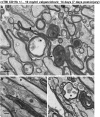
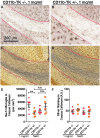

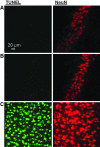
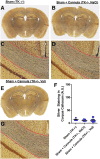
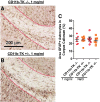
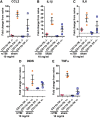
Similar articles
-
Repetitive closed-skull traumatic brain injury in mice causes persistent multifocal axonal injury and microglial reactivity.J Neuropathol Exp Neurol. 2011 Jul;70(7):551-67. doi: 10.1097/NEN.0b013e31821f891f. J Neuropathol Exp Neurol. 2011. PMID: 21666502 Free PMC article.
-
Post-traumatic hypoxia exacerbates brain tissue damage: analysis of axonal injury and glial responses.J Neurotrauma. 2010 Nov;27(11):1997-2010. doi: 10.1089/neu.2009.1245. J Neurotrauma. 2010. PMID: 20822466
-
Repetitive concussive traumatic brain injury interacts with post-injury foot shock stress to worsen social and depression-like behavior in mice.PLoS One. 2013 Sep 18;8(9):e74510. doi: 10.1371/journal.pone.0074510. eCollection 2013. PLoS One. 2013. PMID: 24058581 Free PMC article.
-
The pathophysiology of repetitive concussive traumatic brain injury in experimental models; new developments and open questions.Mol Cell Neurosci. 2015 May;66(Pt B):91-8. doi: 10.1016/j.mcn.2015.02.005. Epub 2015 Feb 13. Mol Cell Neurosci. 2015. PMID: 25684677 Free PMC article. Review.
-
Review: the long-term consequences of microglial activation following acute traumatic brain injury.Neuropathol Appl Neurobiol. 2013 Feb;39(1):35-44. doi: 10.1111/nan.12006. Neuropathol Appl Neurobiol. 2013. PMID: 23206160 Review.
Cited by
-
Array tomography for the detection of non-dilated, injured axons in traumatic brain injury.J Neurosci Methods. 2015 Apr 30;245:25-36. doi: 10.1016/j.jneumeth.2015.02.005. Epub 2015 Feb 14. J Neurosci Methods. 2015. PMID: 25687633 Free PMC article.
-
Delayed Hypoxemia Following Traumatic Brain Injury Exacerbates White Matter Injury.J Neuropathol Exp Neurol. 2016 Aug;75(8):731-747. doi: 10.1093/jnen/nlw045. Epub 2016 Jun 10. J Neuropathol Exp Neurol. 2016. PMID: 27288907 Free PMC article.
-
Repeated Mild Traumatic Brain Injury: Potential Mechanisms of Damage.Cell Transplant. 2017 Jul;26(7):1131-1155. doi: 10.1177/0963689717714092. Cell Transplant. 2017. PMID: 28933213 Free PMC article. Review.
-
Depletion of macrophages in CD11b diphtheria toxin receptor mice induces brain inflammation and enhances inflammatory signaling during traumatic brain injury.Brain Res. 2015 Oct 22;1624:103-112. doi: 10.1016/j.brainres.2015.07.011. Epub 2015 Jul 21. Brain Res. 2015. PMID: 26208897 Free PMC article.
-
To Kill a Microglia: A Case for CSF1R Inhibitors.Trends Immunol. 2020 Sep;41(9):771-784. doi: 10.1016/j.it.2020.07.001. Epub 2020 Aug 10. Trends Immunol. 2020. PMID: 32792173 Free PMC article. Review.
References
-
- Corsellis J.A., Bruton C.J., and Freeman-Browne D. (1973). The aftermath of boxing. Psychol. Med. 3, 270–303 - PubMed
-
- Mortimer J.A. (1985). Epidemiology of post-traumatic encephalopathy in boxers. Minn. Med. 68, 299–300 - PubMed
-
- Geddes J.F., Vowles G.H., Nicoll J.A., and Revesz T. (1999). Neuronal cytoskeletal changes are an early consequence of repetitive head injury. Acta Neuropathol. 98, 171–178 - PubMed
-
- Guo Z, Cupples LA, Kurz A, Auerbach SH, Volicer L, Chui H, Green RC, Sadovnick AD, Duara R, DeCarli C, Johnson K, Go RC, Growdon JH, Haines JL, Kukull WA, and Farrer L.A. (2000). Head injury and the risk of AD in the MIRAGE study. Neurology 54, 1316–1323 - PubMed
Publication types
MeSH terms
Grants and funding
LinkOut - more resources
Full Text Sources
Other Literature Sources
Research Materials

